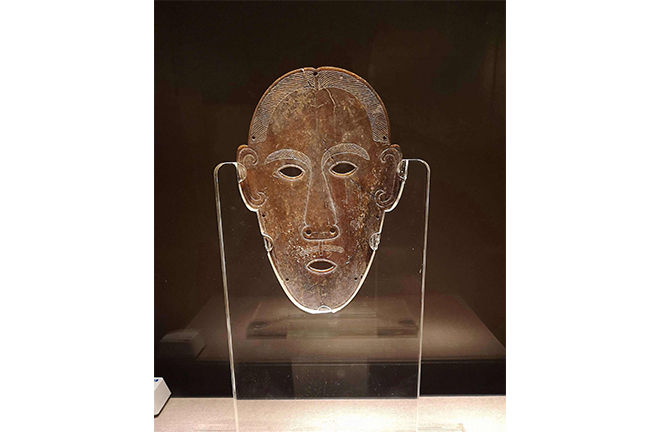Ancient masks in China

FILE PHOTO: The jade mask unearthed from Jingzhou, Hubei
The origin of masks in Chinese culture is often associated with a legendary tale from the Warring States Period (476–221 BCE). According to this story, Wu Zixu, a military general from the state of Wu, foresaw the long-term threat posed by King Goujian of Yue and advised King Fuchai of Wu to conquer the Yue. However, King Fuchai did not trust Wu Zixu and ultimately ordered him to commit suicide, presenting him with a sword as a means of execution. Ten years later, King Goujian indeed conquered the state of Wu, and in despair, King Fuchai took his own life. As he died, he covered his face, fearing to confront Wu Zixu in the afterlife. While this narrative has been recorded in various historical accounts, its reliability is questionable.
In fact, the custom of covering the faces of the deceased predates the era of King Fuchai and can be traced back to the Neolithic Age. Red pottery bowls covering the faces of the deceased were unearthed from tombs of the Dawenkou culture in the coastal areas of Jiangsu Province. The reasons behind this custom remain subject to speculation, with no consensus reached among scholars. The masks unearthed are mainly made from gold, jade, bronze, textile, shell, and leather.
A piece of a clam shell mask was unearthed from a Shang Dynasty tomb in Ci County, Hebei Province. It was crafted from a large scallop shell with two holes in the middle, likely intended for threading ropes or belts and securing the shell behind the head.
A large number of masks have been unearthed from tombs from the Northern Dynasties to the Sui and Tang dynasties in the Astana region of Xinjiang, most made of cloth. The earliest known jade mask dates back to the middle of the Western Zhou Dynasty, consisting of numerous small jade pieces sewn onto silk fabric. A mask crafted from a single piece of jade was unearthed from Qinjiashan in Jingzhou, Hubei Province. This mask was engraved with distinctive facial features, including hair, eyebrows, and facial hair. The tomb in which it was found is believed to have been constructed during the middle and late Warring States Period.
Edited by REN GUANHONG
